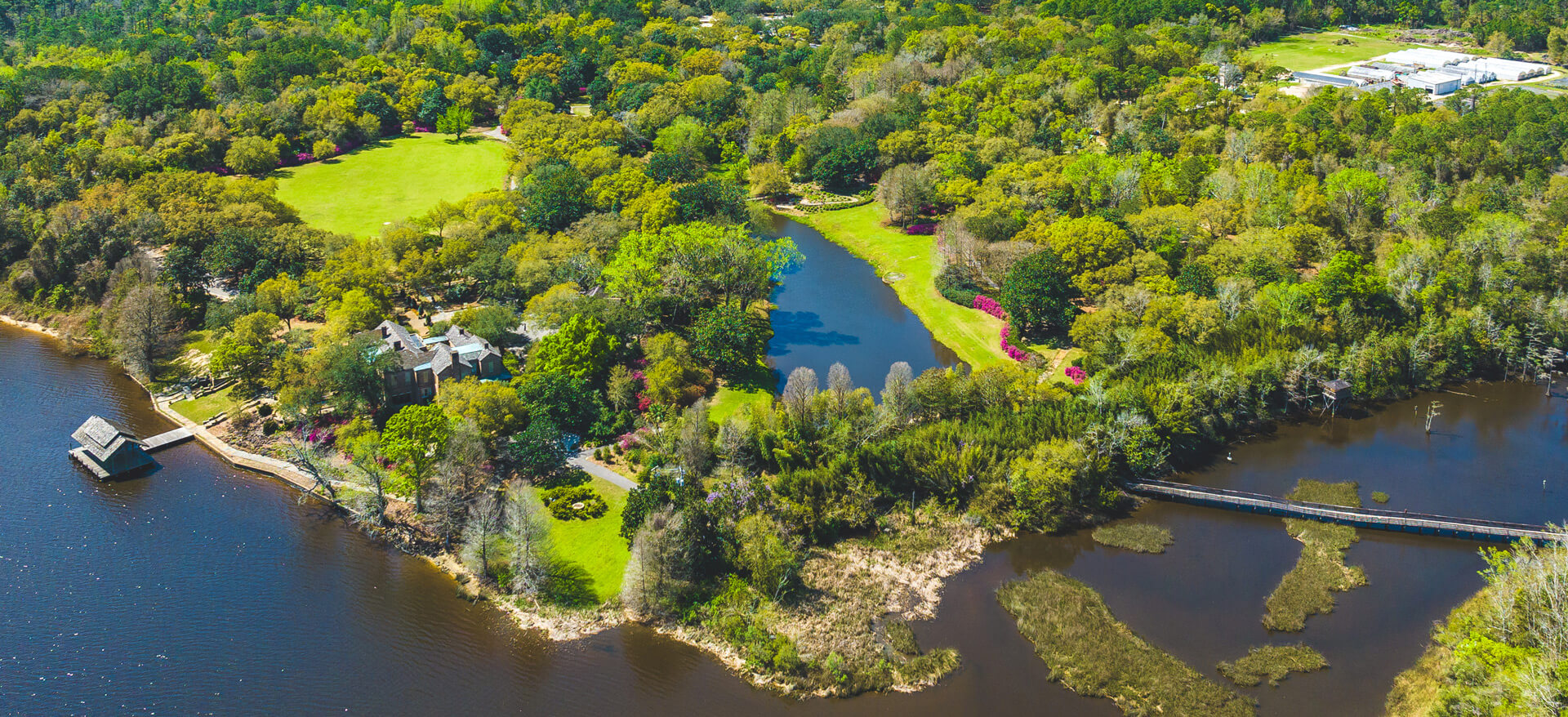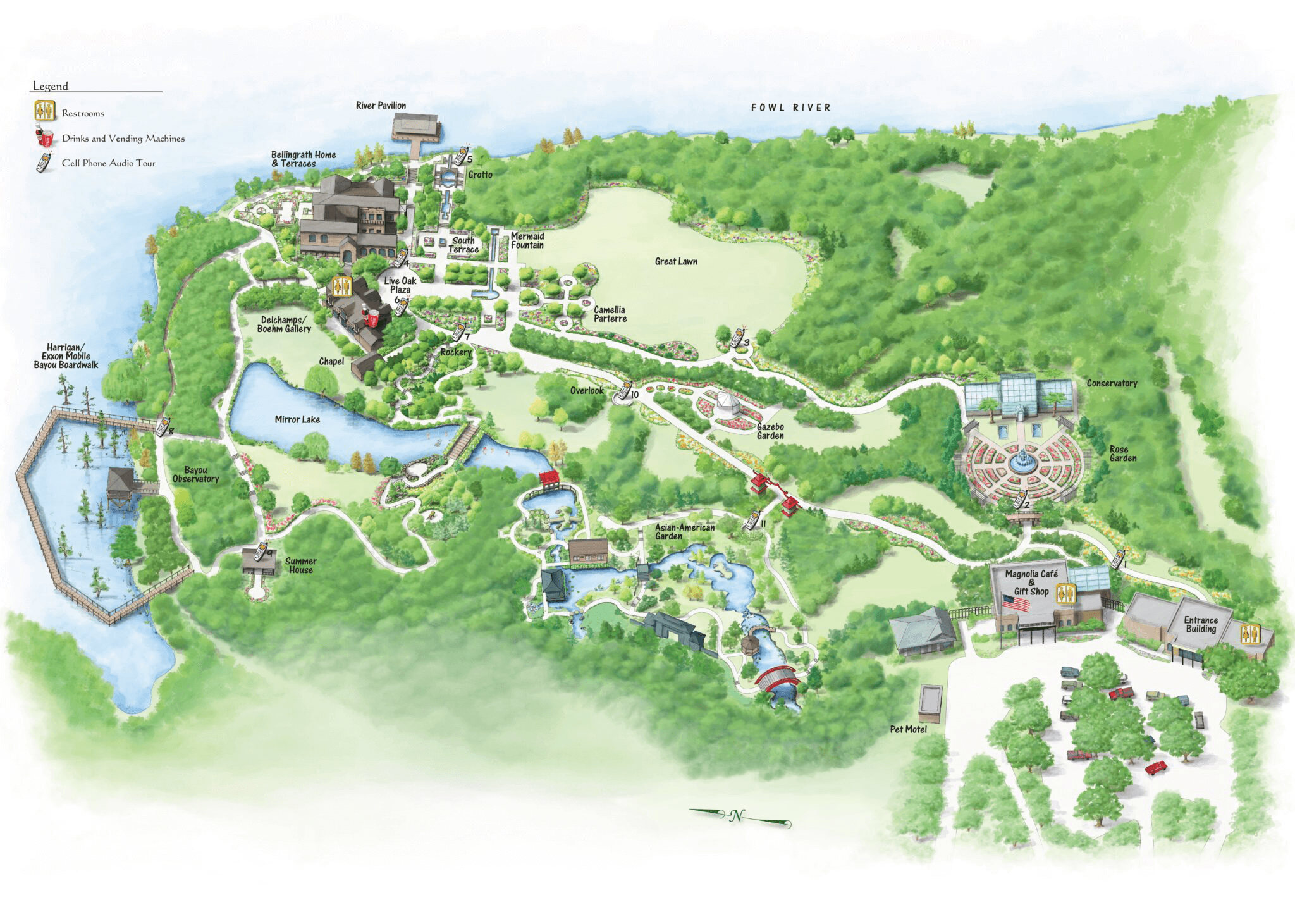Upcoming Event!


Interactive Estate Map
1
Entrance Building
2
Magnolia Cafe
3
The Bellingrath Gift Shop
4
Rose Garden
5
Conservatory
6
Asian-American Garden
7
Gazebo Garden
8
Rockery
9
Camellia Parterre
10
Great Lawn
11
Mermaid Fountain & Runnel
12
Live Oak Plaza
13
Grotto
14
Fowl River Pavillion
15
Bellingrath Home Museum
16
South Terrace
17
East Terrace
18
North Terrace
19
Delchamps / Boehm Gallery
20
Chapel
21
Mirror Lake
22
Lion Overlook
23
Bayou Observatory
24
Summer House
25
